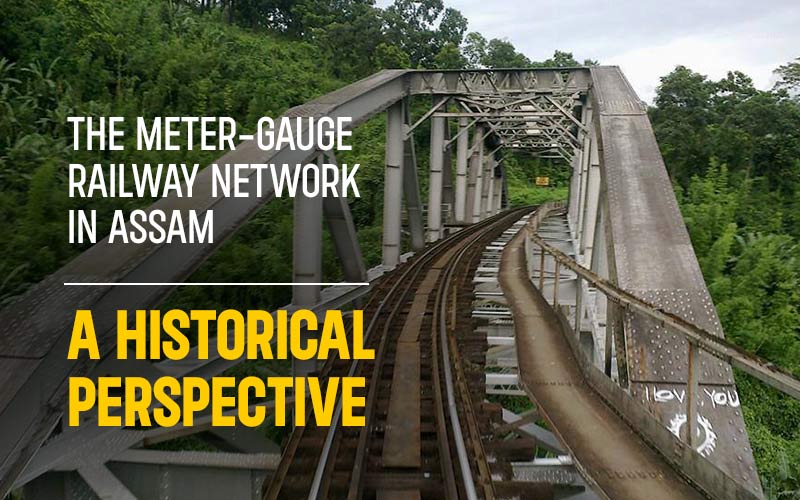
The Meter-Gauge Railway Network in Assam: A Historical Perspective
The meter-gauge railway
network in Assam has been a cornerstone of the region's transportation system,
playing a crucial role in its economic and cultural integration. This article
delves into the fascinating history, significance, and evolution of Assam’s
meter-gauge railway network, including the iconic Lumding-Silchar line.
Early Developments and the Meter-Gauge Era
Assam’s tryst with the
railways began in the late 19th century under the auspices of the Assam Bengal
Railway (ABR). The introduction of the meter-gauge railway network in the
region was a monumental step toward modernizing transportation and connecting
Assam’s fertile plains and lush tea gardens to the rest of India.
Assam's introduction to
railways dates back to 1881 when the Assam Railway and Trading Company
established a 65-kilometer meter-gauge line from Dibrugarh to Margherita. This
line primarily served the booming tea industry and the coalfields of
Margherita, ensuring the efficient transportation of goods to distant markets.
Over the next few decades,
the meter-gauge network expanded to include vital routes such as the
Lumding-Silchar line, facilitating connectivity to southern Assam and beyond.
The Lumding-Silchar Railway Line
One of the most iconic
meter-gauge routes in Assam, the Lumding-Silchar line, stands out for its
historical and strategic importance.
Built between 1899 and 1903
by the Assam Bengal Railway, the Lumding-Silchar line was a major engineering
feat of its time. This line was envisioned to connect the tea-rich Cachar
plains with Lumding Junction, ensuring efficient transportation of tea and
other commodities to broader markets.
The 221-kilometer track
included 37 tunnels and 586 bridges, navigating the challenging terrain of the
Barail mountains in Assam's Dima Hasao district. Overcoming steep gradients,
making it a challenging route for both construction and train operations.
The meter-gauge railway
network has had a profound impact on Assam’s economy and culture:
The railways were
instrumental in transporting tea, Assam’s most famous export, to ports and
markets across India and the world. Coalfields in areas like Margherita
benefited immensely from the efficient transportation network. The network facilitated
the movement of people, fostering cultural exchange and integration within the
state and the broader northeastern region.
Lesser-Known Meter-Gauge Lines in Assam
●
Rangapara North–Dekargaon Line: Built to connect remote
areas in the northern parts of Assam, this line was later converted to broad
gauge.
The meter-gauge railway
network in Assam, with its rich history and significant contributions, remains
a symbol of progress and connectivity. From its early days in 1902 to the
modernization efforts of recent decades, the railways have been pivotal in
shaping Assam’s socio-economic landscape. Routes like the Lumding-Silchar line
serve as a testament to the resilience and vision of those who laid the tracks
through Assam’s challenging terrains, ensuring that the state’s resources and
people remain connected to the rest of the nation.
Trivia
●
Oldest
Railway Engine in Assam: The historic locomotive "Dibru-Sadiya Railway Engine
No. 781" is preserved in the railway museum at Tinsukia.
●
Meter-Gauge
Legacy: Until the early 2000s, Assam had one of the largest
meter-gauge networks in India.
●
First
Train to Silchar: The first train reached Silchar from Lumding in 1903,
opening new possibilities for trade and communication.
Disclaimer: The opinions expressed in this article are those of the author's. They do not purport to reflect the opinions or views of The Critical Script or its editor.

Newsletter!!!
Subscribe to our weekly Newsletter and stay tuned.

















Related Comments